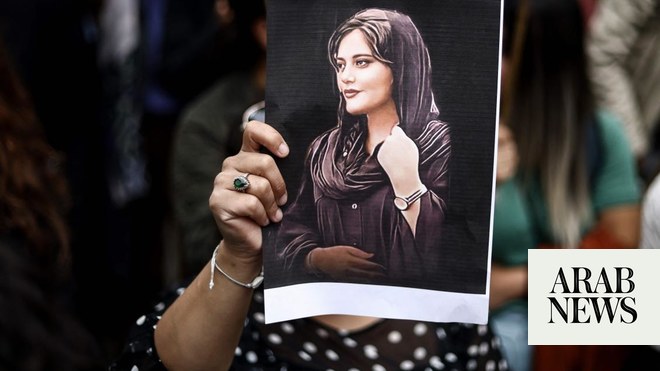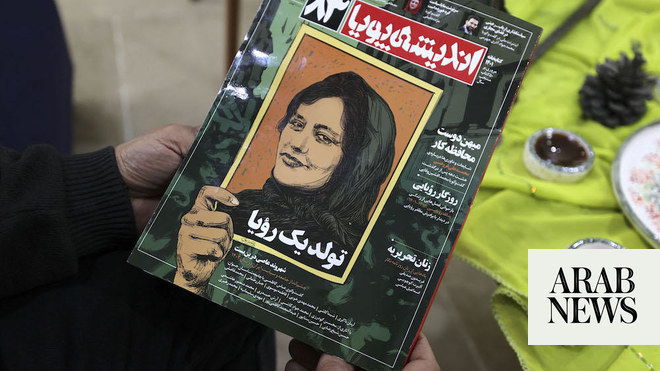
MEK targets security infrastructure, cameras and servers to broadcast dissenting messages
Khomenei died June 3, 1989, to be replaced by current Supreme Leader Ali Khamenei
CHICAGO: Resistance activists in Iran disrupted parts of the nation’s security apparatus, senior figures told Arab News, as the country prepared to mark the anniversary of the death of Ayatollah Ruhollah Khomeini, the founder of one of the world’s most repressive states.
Regime opponents took control of security systems in several cities, including camera networks and servers, and used them to send text messages to more than 585,000 phones across the country, calling for “regime change” and saying “a frustrated nation is sick and tired of the destructive state policies.”
Ali Safavi, a member of the Foreign Affairs Committee of the Paris-based National Council of Resistance of Iran, told Arab News: “Taking over more than 5,000 security cameras and hundreds of their servers, which are exclusively installed to identify and detain those taking part in uprisings, is the latest in a series of similar offensive measures resistance units affiliated with the principal Iranian opposition, the Mujahedin-e Khalq inside Iran, have undertaken since late January.
“These daring operations undermine the regime’s efforts to project an aura of invincibility and omnipresence everywhere. More importantly, they encourage Iranians that an organized opposition movement exists that can easily penetrate and damage the most secret and tightly controlled regime agencies, and emboldens them to defy and resist the ruling theocracy.”
Safavi said the security systems monitor Khomeini’s tomb, government offices, and different locations of significance in Tehran, and are used for surveillance by the offices of the Supreme Leader Ali Khamenei, Iranian President Ebrahim Raisi, the Ministry of Intelligence and Security, the Islamic Revolutionary Guard Corps, and the State Security Force Command.
More than 150 sites belonging to Tehran’s largest municipalities were also seized, and slogans such as “Hail to Rajavi, death to Khamenei” were broadcast, along with pictures of Iran’s resistance leadership.
Also seized were 168 computer servers controlled by the Iran Security Directorates, and cameras used to monitor the daily lives of Iranian citizens.
The MEK and NCRI accuse Raisi, who became president last year, of being responsible for the massacre of more than 30,000 political prisoners in 1988. With the backing of 25 Nobel laureates, the resistance has urged UN Secretary-General Antonio Guterres to conduct an International Commission of Inquiry into the massacre.
The NCRI has the support of hundreds of members of the US Senate and House of Representatives, and has boasted that the resistance in Iran has engaged in continued disruptions, and has damaged the oppressive regime.
Ayatollah Khomeini took control of Iran in February 1979, weeks after the nation’s ruler, Shah Reza Pahlavi, fled the country in the face of nationwide protests. Khomeini then declared himself leader for life, creating a new religious dictatorship. His followers stormed the US embassy on Nov. 4, 1979, and took 52 Americans hostage, imprisoning them for 444 days.
Khomeini died on June 3, 1989 and was succeeded by Khamenei, who has overseen a regime that has executed more than 10,000 dissidents, assassinated hundreds of opponents in more than 40 countries, and killed thousands more citizens during protests.











